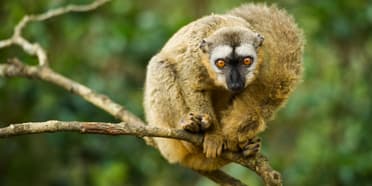
Safari Tours to Andasibe-Mantadia NP
-

6-Day Best of Madagascar Wildlife Tour
$2,599 to $2,799 pp (USD)
Madagascar: Private tour
Mid-range Lodge & Guest HouseYou Visit: Antananarivo (Start), Andasibe-Mantadia NP, Perinet SR, Antananarivo (End)

Wayfairer Travel
4.8/5 – 183 Reviews
-
![13-Day Andasibe - Tsiribihina- Baobab Alley - Ranomafana]()
13-Day Andasibe - Tsiribihina- Baobab Alley - Ranomafana
$2,099 pp (USD)
Madagascar: Private tourBudgetCamping & Hotel
You Visit: Antananarivo (Start), Andasibe-Mantadia NP, Antsirabe (City), Miandrivazo (Town), Tsiribihina (Town), Allee Des Baobabs (Highlight), Ranomafana NP, Antananarivo (End)

Soul Of Madagascar Tours
4.9/5 – 35 Reviews
-
![16-Day Tired of Staying Home - Discover Madagascar]()
16-Day Tired of Staying Home - Discover Madagascar
$3,504 pp (USD)
Madagascar: Private tour
Mid-range Lodge & HotelYou Visit: Antananarivo (Start), Palmarium Reserve, Andasibe-Mantadia NP, Antsirabe (City), Ranomafana NP, Ambalavao (City), Ranohira (Town), Isalo NP, Ifaty (Town & Beach), Antananarivo (End)

Malagasya Travel
4.9/5 – 20 Reviews

 Madagascar Parks
Madagascar Parks







